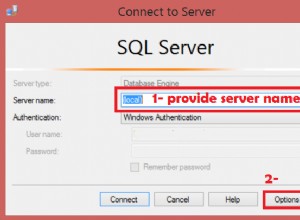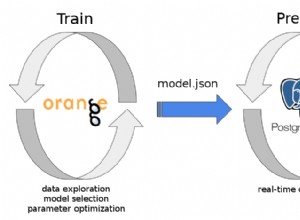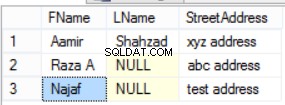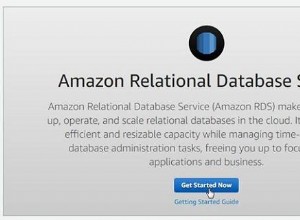Być może jesteś ofiarą konwencji mapowania EF Code-First, które automatycznie tworzą relację między NationAllies i toNation nie chcesz mieć.
Jeśli dobrze cię rozumiem (ale nie mam stuprocentowej pewności, jeśli tak), tak naprawdę chcesz mieć dwie relacje i odsłoniłeś tylko jeden koniec relacji w każdym z podmiotów. Tak więc NationAllies NIE wskazuje na toNation ale do "niewidzialnego" narodu właściciela w twoim NationAlly podmiot.
Jeśli tak jest, musisz jawnie nadpisać mapowania konwencji. W Fluent API EF 4.1 może to wyglądać tak:
public class MyContext : DbContext
{
public DbSet<Nation> Nations { get; set; }
public DbSet<NationAlly> NationAllies { get; set; }
protected override void OnModelCreating(DbModelBuilder modelBuilder)
{
modelBuilder.Entity<Nation>()
.HasMany(n => n.NationAllies)
.WithRequired()
.Map(conf => conf.MapKey("OwnerID"))
.WillCascadeOnDelete(false);
modelBuilder.Entity<NationAlly>()
.HasRequired(a => a.toNation)
.WithMany()
.Map(conf => conf.MapKey("NationID"))
.WillCascadeOnDelete(false);
}
}
To mapowanie utworzy dwa klucze obce OwnerID i NationID w NationAllies tabela, obie wskazują na klucz podstawowy ID w Nations tabela.
Edytuj
Oto aplikacja, z którą testowałem:
- Utwórz nową aplikację konsolową w VS2010/.NET 4.0, nazwij ją „NationsApp”
- Dodaj odniesienie do „EntityFramework.dll”
- Wyczyść zawartość „Program.cs” i zamiast niej wklej następujący wpis:
Zawartość Program.cs:
using System;
using System.Collections.Generic;
using System.Data.Entity;
namespace NationsApp
{
public class Nation
{
public int ID { get; set; }
public int name { get; set; }
public List<NationAlly> NationAllies { get; set; }
}
public class NationAlly
{
public int ID { get; set; }
public int level { get; set; }
public Nation toNation { get; set; }
}
public class NationsContext : DbContext
{
public DbSet<Nation> Nations { get; set; }
public DbSet<NationAlly> NationAllies { get; set; }
protected override void OnModelCreating(DbModelBuilder modelBuilder)
{
modelBuilder.Entity<Nation>()
.HasMany(n => n.NationAllies)
.WithRequired()
.Map(conf => conf.MapKey("OwnerID"))
.WillCascadeOnDelete(false);
modelBuilder.Entity<NationAlly>()
.HasRequired(a => a.toNation)
.WithMany()
.Map(conf => conf.MapKey("NationID"))
.WillCascadeOnDelete(false);
}
}
class Program
{
static void Main(string[] args)
{
using (var context = new NationsContext())
{
try
{
// We have three Nations and two Allies
Nation nation1 = new Nation() {
NationAllies = new List<NationAlly>() };
Nation nation2 = new Nation() {
NationAllies = new List<NationAlly>() };
Nation nation3 = new Nation() {
NationAllies = new List<NationAlly>() };
NationAlly ally1 = new NationAlly();
NationAlly ally2 = new NationAlly();
// Nation1 has two Allies
// (Nation1 is the "owner" of both Allies)
nation1.NationAllies.Add(ally1);
nation1.NationAllies.Add(ally2);
// toNation of ally1 refers to Nation2
ally1.toNation = nation2;
// toNation of ally2 refers to Nation3
ally2.toNation = nation3;
context.Nations.Add(nation1);
context.Nations.Add(nation2);
context.Nations.Add(nation3);
context.SaveChanges();
}
catch (Exception e)
{
throw;
}
}
}
}
}
Możesz ustawić punkt przerwania na "throw", aby obserwować możliwe wyjątki w e w debugerze.
Tworzy to bazę danych o nazwie NationsApp.NationsContext jeśli używasz SQL Server Express i nie masz zdefiniowanych żadnych dalszych parametrów połączenia.
Daje dwie relacje Nation_NationAllies (FK to „OwnerID”) i NationAlly_toNation (FK to „NationID”). Wszystkie kolumny nie dopuszczają wartości null. Wynik w DB jest następujący:





